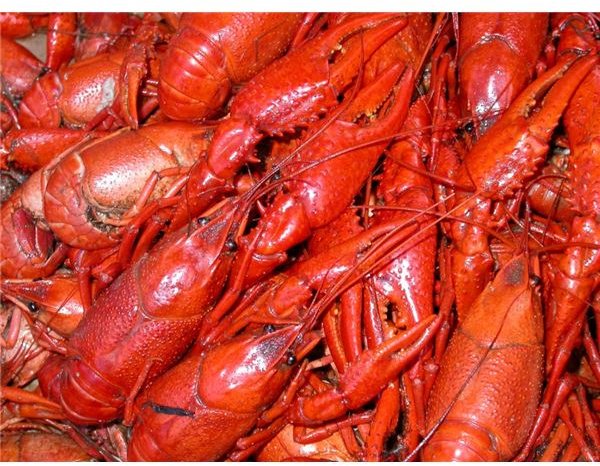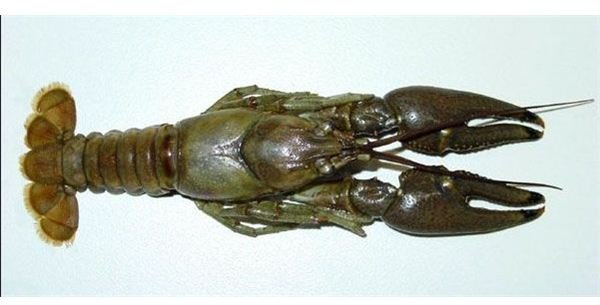Crayfish: Aquatic Crustaceans Benefiting the Environment and Its Ecosystems
Biology and Habitat
Crayfish are small aquatic creatures, approximately one to six inches in length. They take on a muddy green, yellow or red color—sometimes even black. There are 540 species of crayfish worldwide—about 400 of these are found in North America. Locations with an especially sizable population are Louisiana (the bayou) and the Mississippi River basin. They are most often found east of the Rocky Mountains, especially in the southeastern part of the United States. Crayfish live in ponds, rivers and marshes. Some species burrow underground—even under rock—producing tunnels one to five feet deep.
The crayfish body is divided into a cephalothorax (head and midsection) and the abdomen (segmented rear). The entire body is covered by a hard outer shell called the carapace. Crayfish have four pairs of walking legs, two claws, two pairs of antennae and a head with a sharp snout. Five pairs of swimmerets are located under the abdomen. Their eyes are on movable appendages and they have a fanned tail. While an external skeleton provides armor-like protection, it limits maneuverability and growth. Since growth is especially rapid early in the crustacean’s life, molting must occur six to ten times during the first year of life. Molting frequence is less often in later years. Immediately following molting, a crayfish is protected only by a soft, temporary covering. This increases the crustacean’s vulnerability to predators.
Behavior and Diet
Rusty Crayfish - credit: USGA
Crayfish are nocturnal—they hide under rocks or in tunnels during the day and feed at night. They use their antennae to feel for food and will eat almost anything, including dead plants, insects, snails and algae.
Mating takes place in the fall, but fertilization and hatching occurs when the female releases her eggs, and is a springtime event. Eggs resemble black berries and are attached to the female’s abdomen. The female will fan the young with her tail for cleaning and aeration. There may be anywhere from 20 to 700 eggs. Once hatched, the young remain by the female until they have molted twice.
Typically crayfish live for about two years, however some individuals have been known to live as long as 20 years.
Ecological Concerns
Crayfish are threatened by habitat loss, water pollution, sedimentation, being trapped for human consumption, and the introduction of non-native, invasive species. Because crayfish are sensitive to any form of pollution, they are good indicators of water quality. Dozens of species of crayfish are endangered or in need of protection. Occasionally, as is the case with the Rusty Crayfish, a variety of crayfish may be out of its appropriate habitat, even becoming an ecological nuisance. The Rusty Crayfish grows too fast to serve as food for some species and depletes the eggs of other, important aquatic life.

As Food: Cooked Crayfish
Credit: USGS
References and Resources
EPA: Biological Indicators of Watershed Health: Crayfish; https://www.epa.gov/bioiweb1/html/crayfish.html
Ohio Department of Natural Resources: Crayfish; https://www.ohiodnr.gov/Home/species_a_to_z/SpeciesGuideIndex/crayfish/tabid/6841/Default.aspx
Aquatic Nuisance Species Task Force: Rusty Crayfish; https://www.anstaskforce.gov/spoc/rustycrayfish.php
Lock Haven University: Pennsylvania Crayfish Reference Collection; https://www.lhup.edu/tnuttall/pennsylvania_crayfish_reference_.htm
You may also enjoy: Fun Facts about the Tiger Salamander, by Diana Cooper.
